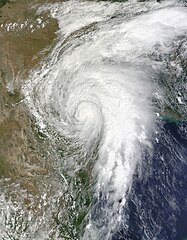TheProfessor wrote:Texas Snow wrote:I get the theory on why you’re saying the Canadian solution would be best for DFW snowfall, but when I look at the 0Z snow output and all prior runs all stopping snow west of DFW it does certainly give me pause. Curious on your thoughts.
There's a couple things you shouldn't do when forecasting winter weather(Especially professionally) one of them is getting too focused on precip maps. They can lie to you a lot of times. The most important thing you want to do is follow the energy(vorticity) because it will tell you where the heaviest snow will be. I actually think the Canadian went a bit in the wrong direction(towards the GFS) at hour 102 you'd like to see that trough neutral to negative around that time so the system can tap into more moisture(dry air at the midlevels is preventing a snow storm from happening on this run.). But, even so if you look at the vorticity and vertical motion near DFW it hints that with sufficient moisture there should be some heavy snow around there.
The surface maps should not even be taken seriously beyond 48 hours, in my opinion.
We all have a saying "you don't want to be in the bulls-eye so far out" for a reason. Think of it like you are driving to your house from work, typically a simple drive but with changing weather conditions, constructions, fallen trees, you really can't expect precise timing of arrival just due to the chaotic nature of these things. Some can delay you a short amount of time or even a long period, drastically changing the arrival outcome time. And these obstacles you can't see until they are close enough within your vision of sight.
 The posts in this forum are NOT official forecast and should not be used as such. They are just the opinion of the poster and may or may not be backed by sound meteorological data. They are NOT endorsed by any professional institution or
The posts in this forum are NOT official forecast and should not be used as such. They are just the opinion of the poster and may or may not be backed by sound meteorological data. They are NOT endorsed by any professional institution or 












